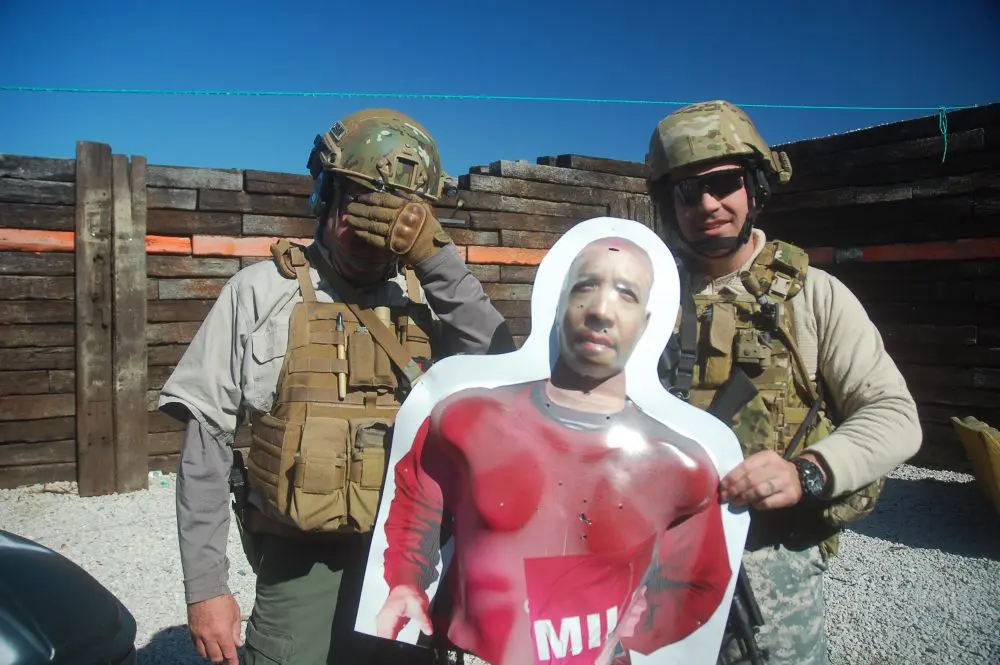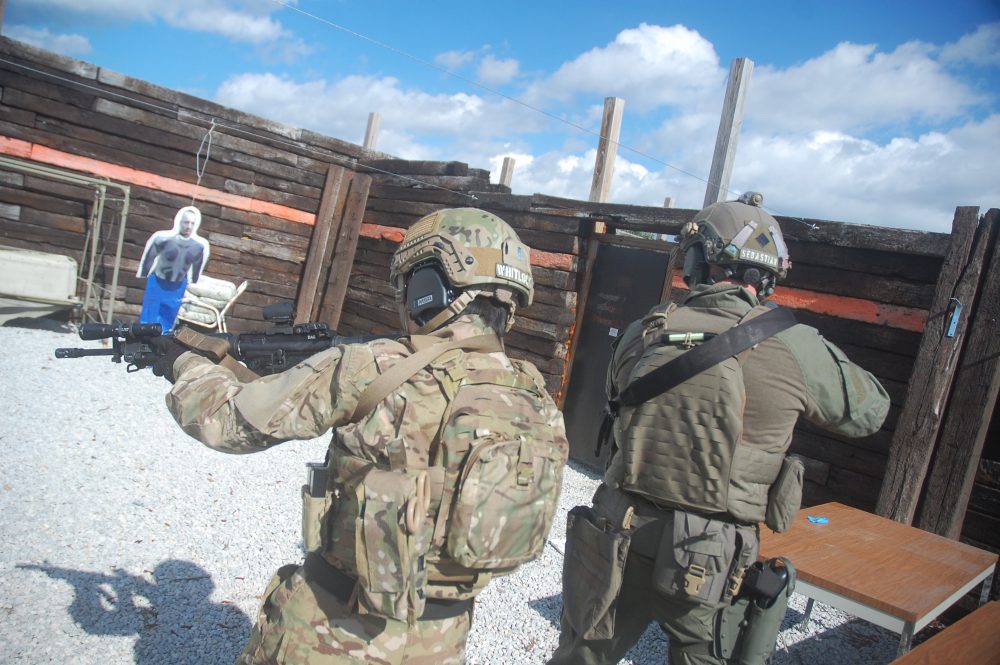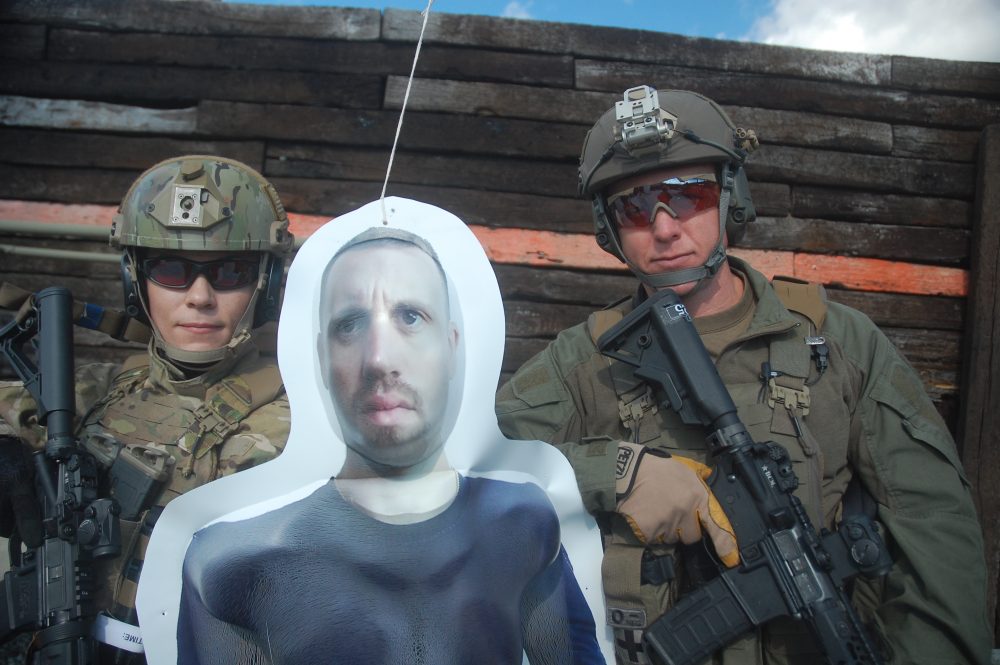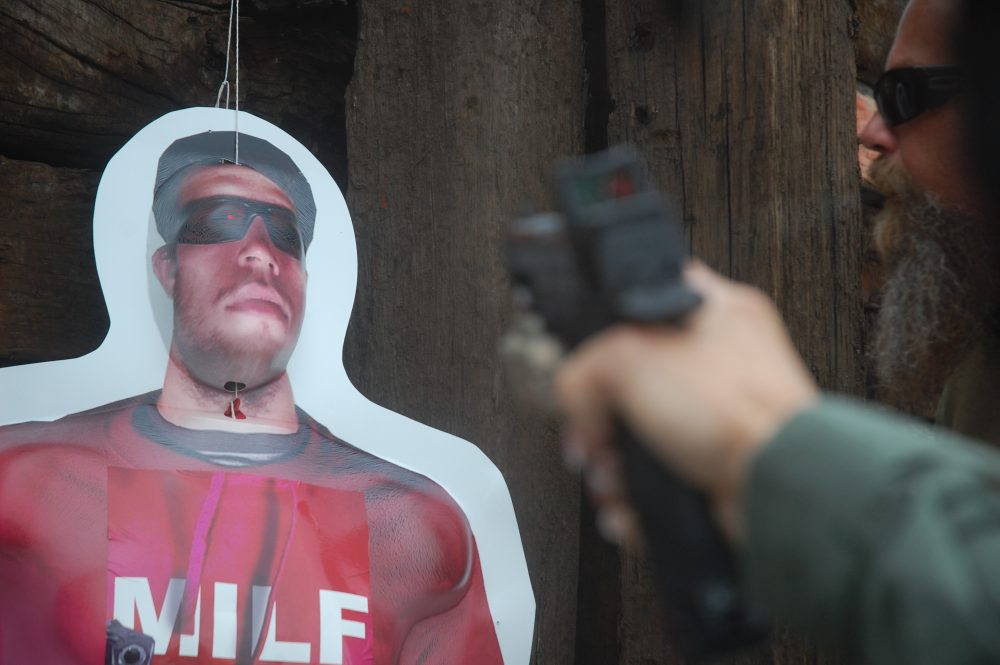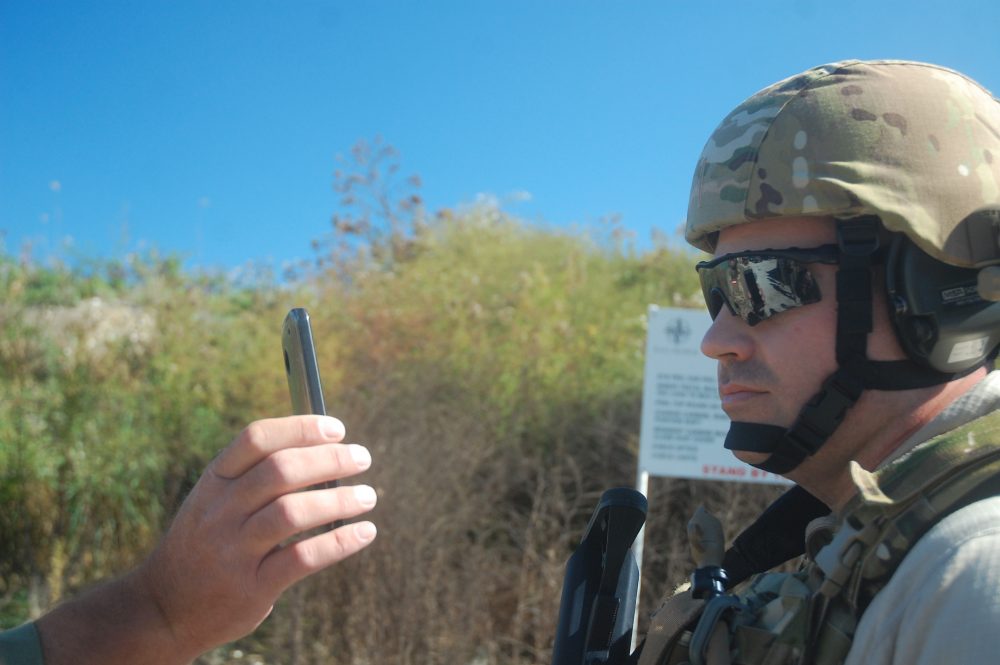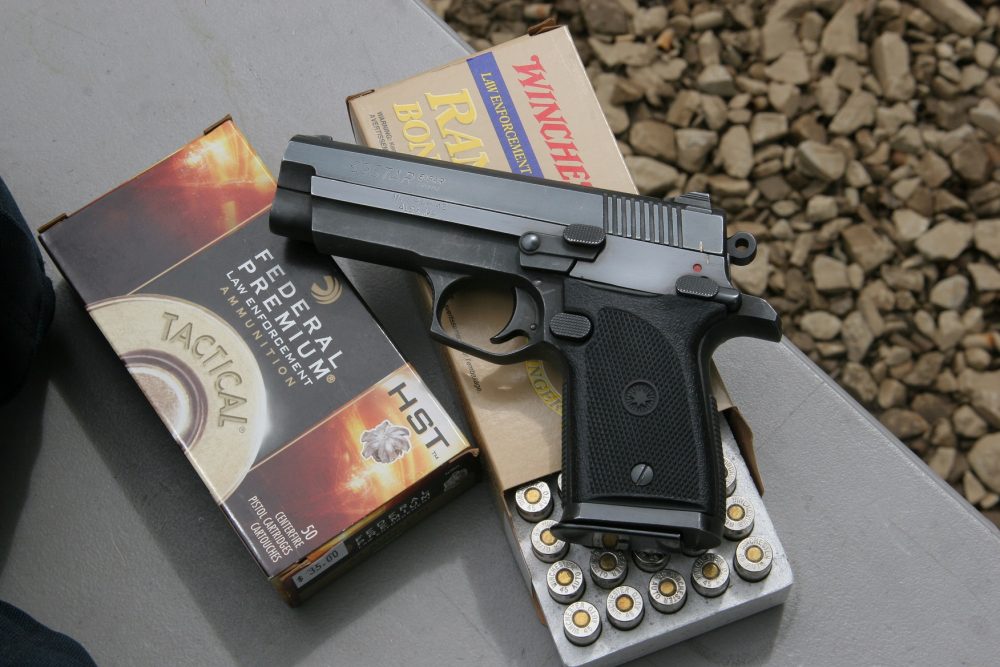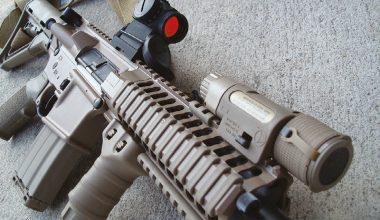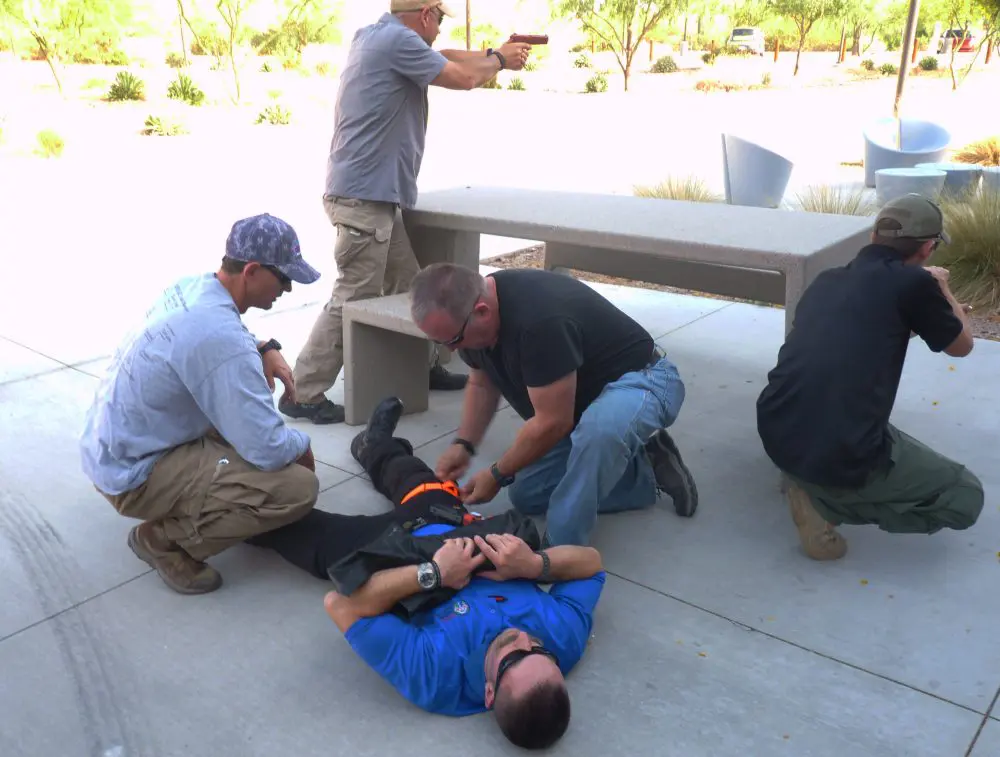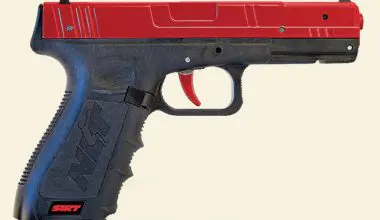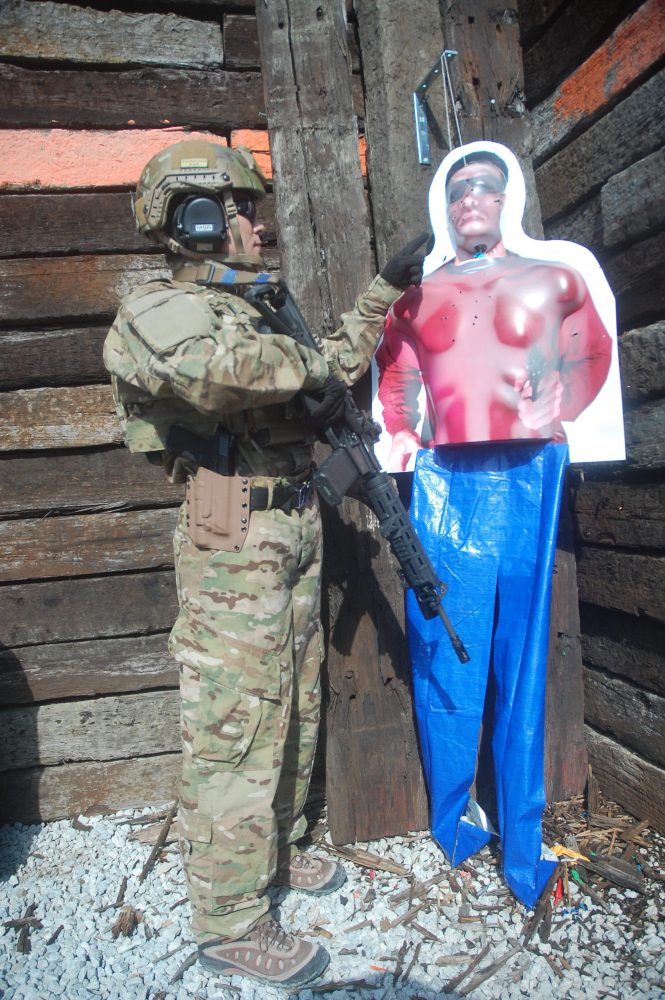
For most shooters, targets consist of a flat piece of paper with a scoring ring, a nebulous shape (such as the bowling pin), or in some instances a humanoid representation. These targets often have general scoring rings, apparently to compensate for the lowering of standards and to ensure that everyone is “qualified.” These paper targets are useful in teaching marksmanship, along with manipulation, tactics and mindset—what we need to win the fight.
Unfortunately, that flat piece of paper may be the only target that most cop, military, or private citizens will ever shoot. To our way of thinking, we believe that initial square-range training should be followed with live-fire shoot house, and then with force-on-force.
Unfortunately, most shoot houses within the U.S. belong to the military, federal or local LE, and very few will allow civilians to participate.
Targetry is therefore stifled by bureaucratic inertia and unimaginative instructors.
Table of Contents
REACTIVE TARGETS IN THE HOUSE
We strongly believe that reactive targets are not optional, but rather required for shoot-house iterations. Using flat targets means shooters move through the house, fire the magic two rounds to the chest, and continue to move without regard to the effectiveness of the hits. Targets are only scored at the end of the run. There is no penalty for failing to achieve immediate incapacitation, and it drastically limits what can be accomplished. Using flat paper targets means that any shoot-house run is a flow drill on steroids. Necessary and worthwhile, but not providing full benefit.
Reactive targets require surgical precision to defeat, rather than the broad expanses provided by bowling-pin targets—or worse, B27 targets. They also provide the opportunity to shoot the target to the ground, and likewise allow for post-engagement sequencing. All in all, pretty worthwhile.
Designer/manufacturer Tatiana Whitlock clears a room at Alliance, Ohio, PD shoot house with her partner Mike Sebastion. They have verbally challenged the unknown guy and are continuing to process the room.
Are there downsides to reactive targets? Absolutely! They are significantly more expensive, to include not only the initial cost of the targets (approximately $10 each compared to 50 cents each for paper targets), but also in the minimal cost of balloons and twine. Reset time is longer and sometimes a pain in the butt. However, you must also assume that the initial cost is mitigated by not only the multiple use of the targets, but also by the drastically increased training value.
Until recently, the available reactive targets were a box utilizing a tethered balloon to function, and resembled humans only if you were a user of psychedelic drugs. Yeah, we realize that no targets look or act like a human being. We know that we have to sprinkle copious quantities of fairy dust to consider any targets to be humanoid, and we accept that.
Reactive targets require surgical precision in order to burst the balloon(s) that function the target. If you don’t accomplish this, the target will (figuratively) thumb his nose at you.
Tatiana and Mike next to an unknown. Photographs of real people are used to reinforce the idea that we are fighting people, not amoebas.
FIRST LADY OF REACTIVE TARGETS
ID Target Systems is owned by a very sharp lady. Tatiana Whitlock is a successful businesswoman whose background in Fine Arts and Industrial Design is responsible for the finished product. A relatively new shooter, she saw the need for a more realistic target. She saw the need for a molded target that had facial features to aid in recognition. The result was a head-to-hip target, with a body about one-third the diameter of a human. That depth allows for changing the target aspect relative to the shooter, and it is a wake-up call for many.
This target also depends on balloons being shot to drop it, and there are cavities in the brain and chest to capture the balloons. These targets are made of a lightweight plastic. This weight savings allows the targets to be hung from anything, which is a step up from cardboard targets. The light weight also means reduced shipping costs—a major point for us.
Kris Rambur puts dot of her visible laser in MILF’s right eye.
ADVANTAGES
The major reasons why these targets are better than other reactive targets (by an order of magnitude) are:
- They have more realistic three-dimensional humanoid shapes, which reflects our doctrine that we are not shooting, but fighting with a gun.
- We can utilize specific faces on the targets (such as Muffy the hostage and Bayan the Sky God, terrorist leader of MILF—real pics of real people). This means we can more realistically script more scenarios, which translates to more realistic training.
- Target identification is enhanced. Applying adhesive panels over the face and chest means we can add or subtract guns, change faces, etc.
- Those adhesive panels are also good to go as repair panels for the two main target areas, which get shot up regularly.
- I can still conduct training in the rain. Unlike cardboard, plastic does not absorb water and get soggy, which increases weight and makes it impossible for the balloon to hold it up. Water also makes the cardboard delaminate, rendering it useless.
Before each run in the shoot house, we make a picture of a specific person. In this case it is Bayan, a high-value target who must be taken alive.
MANUFACTURER HITS THE SHOOT HOUSE
We had asked Tatiana if she could supply some targets to us for an upcoming EAG Shoot House class. What followed were multiple communications between us lasting several months. I invited Tatiana to come down to the class so she could see the targets in use and be better able to rectify any potential issues. We wound up doing three classes during that iteration at the Alliance, Ohio, PD—a Shoot House class, a CQB Operations class, and a Shoot House/CQB Refresher course, the last being a proof of concept class—a total of 12 straight days.
Tatiana came down for all 12 days, and while initially we/she wanted to observe, we fed her into a class—actually, all three classes. Any doubts we had about her ability to hang with the big dogs evaporated as she did exactly what most females in our classes do: she listened, processed the information, and then performed as she was instructed to do. No prior bad habits and no superego made for a wonderful teaching and learning experience.
This direct participation as both an observer and end user for this length of time is pretty much a unique experience. While we often get industry people in for various classes, it’s rare for us to have this type of immersion participation (Bravo Company and Crye Precision are two that come to mind as forward leaning). As a direct result of this, Tatiana made some field-expedient modifications and will be instituting a few production changes. I wish more manufacturers would do this.
Bayan is not armed, but this didn’t prevent Major Jr. from engaging Bayan, while his totally embarrassed father hides his head in shame.
Many manufacturers produce products that are—at best—marginal in real-world use, and often use poor sources rather than becoming directly involved. Several years ago, there was a gun manufacturer in the southwest who made various and sundry AR- and AK-type weapons noted for the heavy sewer pipes used as barrels. He didn’t shoot and personally stated to me that he disliked guns and didn’t like handling them. This statement immediately followed an ND a good 12 inches from his right foot. He wound up stiffing a lot of vendors and customers and is off the radar—which is not a bad thing.
Aside from using the ID Targets as intended—reactive targets—we can also use them as static targets on the square range. The replacement chest and face panels mean that the targets can be used for an extended period of time. The big issue is that they represent humans, not amoebas. While some have issues with this, they need to face reality.
The Second Amendment is not about the sporting use of firearms, but rather about the defense of the Nation, foreign and domestic. That means engaging the bad guys—human beings—efficiently, and has nothing to do with any sports. The ID Targets enhance our training, which enhances our ability to win the fight. And yes, they are 100% made in the USA.
Pat Rogers is a retired Chief Warrant Officer of Marines and a retired NYPD Sergeant. Pat is the owner of E.A.G. Inc., which provides services to governmental organizations and private citizens. He can be reached at [email protected].
SOURCE:
ID Target Systems
(262) 674-6689
www.idtargetsystems.com
